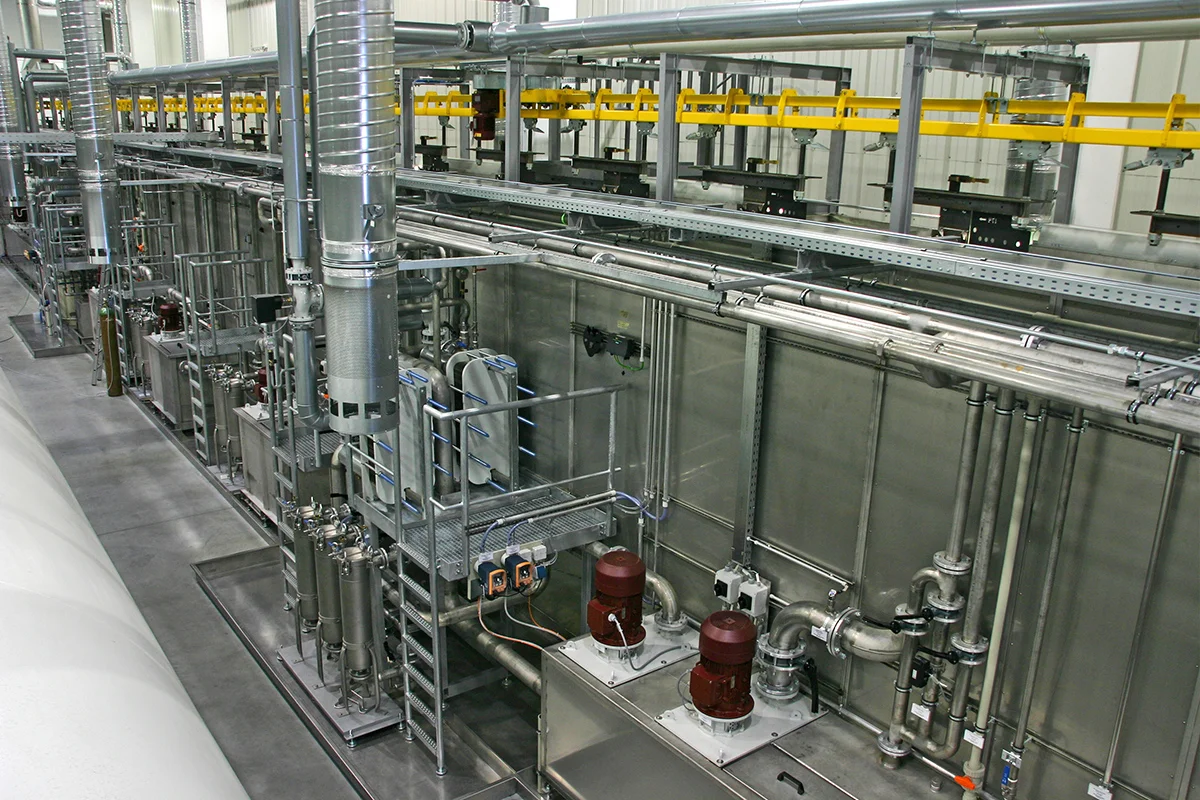- This topic is empty.
-
AuthorPosts
-
04/11/2025 at 09:47 #80422
Understanding the Electrophoretic Coating Line Process
An electrophoretic coating line represents a crucial innovation in modern surface finishing technology. Often referred to as e-coating, this process uses electrical current to deposit a paint or coating material onto a conductive surface. The system typically includes pretreatment, electrophoresis, ultrafiltration, baking, and curing. By combining automation, energy efficiency, and precision, electrophoretic coating lines enable consistent film thickness, corrosion resistance, and strong adhesion across large-scale manufacturing applications.
In industrial production, this coating technology is commonly used for automotive components, household appliances, construction materials, and metal furniture. The entire e-coating line ensures that every part receives uniform protection, even in complex shapes or hidden recesses that traditional spraying cannot easily reach. In this blog post, Lexuan Intelligent Equipment, a professional electrophoretic coating equipment exporter, will share the process of electrophoretic coating line, its environmental performance, etc.
Structure and Workflow of Complete E-Coating Line
A standard electrophoretic painting line integrates several interconnected systems, forming a closed-loop production process. It begins with pretreatment, where degreasing, water rinsing, and phosphating remove contaminants and prepare the surface for coating adhesion.
Next comes the electrophoresis tank, where the parts are immersed in a water-based paint bath. Once an electric field is applied, charged paint particles migrate toward the workpiece and form a uniform coating layer. The ultrafiltration (UF) system then recycles excess paint to reduce waste and maintain solution purity.
After coating, the components move through a baking oven, where the film crosslinks and cures at controlled temperatures. The final step often involves quality inspection and cooling, ensuring surface gloss, color uniformity, and adhesion meet industrial standards. Each stage of the electrophoretic coating line is designed to ensure precision, reliability, and sustainability.
Automation and Intelligent Control in Electrophoretic Coating Systems
Modern automatic electrophoretic coating lines incorporate intelligent control systems to monitor temperature, voltage, bath concentration, and production rhythm in real time. With programmable logic controllers (PLC) and human–machine interfaces (HMI), operators can easily adjust process parameters and track coating quality.
In addition, data collection and analysis functions allow predictive maintenance and process optimization. Smart automation reduces human error and improves coating consistency across multiple batches. For manufacturers seeking stable, high-volume output, these digital systems represent the foundation of lean and efficient production.

Environmental Performance of Electrophoretic Painting Line
As global industries move toward sustainability, the eco-friendly electrophoretic coating line has gained attention for its minimal environmental footprint. The use of waterborne coatings significantly reduces volatile organic compound (VOC) emissions compared to solvent-based methods.
Moreover, closed-loop filtration and recycling systems minimize chemical discharge and water consumption. Many e-coating lines now adopt advanced anode and cathode materials that extend bath life and maintain optimal performance over time. The integration of energy-efficient ovens and wastewater treatment units further aligns electrophoretic coating technology with modern environmental standards and green manufacturing goals.
Applications of Electrophoretic Coating in Diverse Industries
The industrial electrophoretic coating line has become a standard solution in multiple sectors where durability and corrosion resistance are critical. In the automotive industry, e-coating is used for body shells, chassis parts, and engine components, offering superior protection against rust and abrasion.
In the home appliance field, manufacturers use e-coating for metal surfaces of refrigerators, washing machines, and air conditioners, ensuring long-lasting appearance and safety. Architectural hardware and metal furniture also benefit from electrophoretic coatings, which combine decorative aesthetics with mechanical strength.
In the electronics and machinery industries, electrophoretic coatings provide insulation and chemical resistance, meeting high-precision engineering requirements. The versatility of the coating line makes it an essential part of modern industrial finishing systems.
Design Considerations for Building Customized E-Coating Line
When designing an electrophoretic coating line, several factors determine system performance and cost efficiency. Key considerations include product size and material, production capacity, paint type (cationic or anionic), and plant layout.
Manufacturers often work with professional coating equipment suppliers to customize tank dimensions, conveyor speed, drying oven configuration, and automation level. Proper planning ensures smooth workflow between processes, reduces energy consumption, and enhances throughput.
Additionally, safety systems such as overvoltage protection, temperature control, and emergency exhaust devices are essential to meet industrial regulations and ensure operator safety. A well-engineered electrophoretic coating line balances productivity, stability, and environmental compliance.
Global Trends and Future Prospects of Electrophoretic Coating Technology
With continuous innovation in material science and digital manufacturing, the future of electrophoretic coating lines is moving toward higher precision, smarter operation, and lower carbon emissions. Integration with Industry 4.0 technologies enables real-time monitoring, remote diagnostics, and adaptive process control.
New-generation water-based coatings are being formulated to improve color variety, UV resistance, and film toughness. Hybrid coating lines that combine electrophoresis with powder or spray finishing are emerging to expand application flexibility.
As sustainability and efficiency become global priorities, the electrophoretic coating line will continue to evolve as a key solution for achieving high-quality, eco-conscious surface finishing in modern manufacturing.
Conclusion
The electrophoretic coating line stands as a model of technological advancement in industrial finishing. It unites automation, environmental protection, and precision to meet the complex demands of today’s manufacturing industries. Whether applied in automotive, appliance, or metal fabrication sectors, e-coating lines deliver consistent quality, optimized resources, and sustainable operation.
In the future, as intelligent manufacturing expands and environmental regulations tighten, electrophoretic coating systems will play an even more vital role in shaping efficient, smart, and green production ecosystems.
http://www.lexuaneqpt.com
Lexuan Intelligent Equipment -
AuthorPosts
- You must be logged in to reply to this topic.